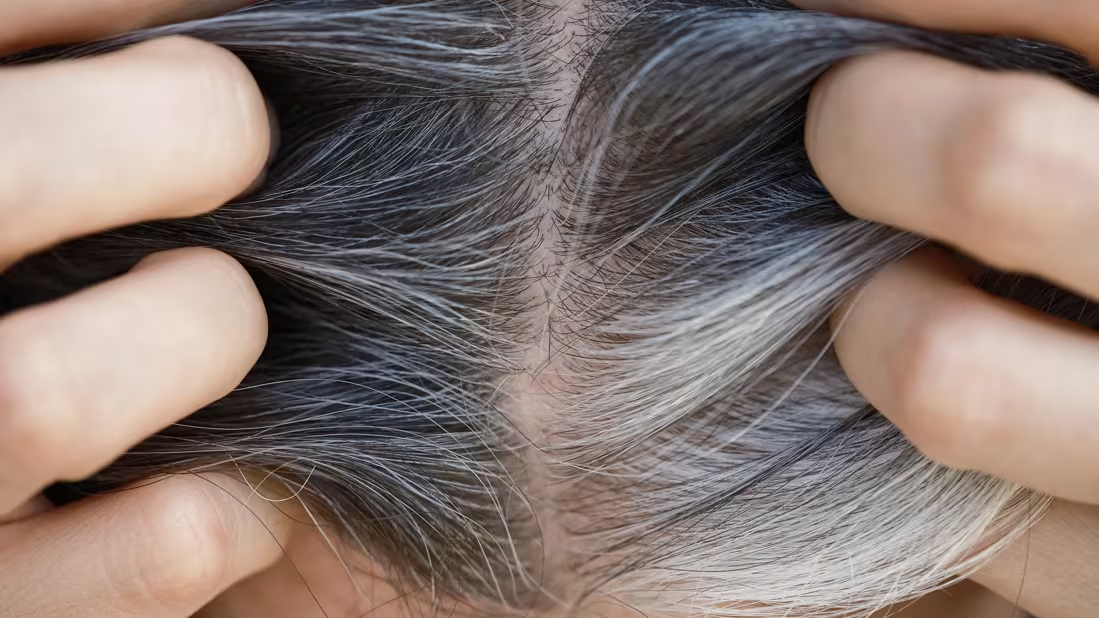News
Causes Of Gray Hair And How To Handle It?

Age is the most likely reason for typical graying, but premature gray hair may be caused by stress, diet, smoking or autoimmune disease
A silver strand catches your eye as you look in the mirror. You immediately lean in for a closer inspection. Your fingers tousle your hair in a frantic search. Could there really be a gray hair on your head?
The answer is yes because going gray is a natural part of human development (even if many people dread it, given societal feelings about aging).
But why does hair turn gray and — maybe more importantly to some folks — can this transformation be delayed or even prevented? Let’s find out from dermatologist Wilma Bergfeld, MD.
Why hair turns gray
A natural pigment called melanin dictates the color of your hair. Different blends can tint your hair hues of black, brown, blonde or red. “The amount and combination of melanin determines hair color,” explains Dr. Bergfeld. “It’s like paint-mixing.”
But as you age, cells in your hair follicles called melanocytes produce less melanin. It could happen because the color-producing cells wear out, get damaged or lose support systems in the body.
Whatever the reason, the reduction in melanin fades your hair to shades of gray. White hair is a sign of very little or no melanin production.
Research shows that most people start seeing gray hairs on their head in their 30s or 40s, though timing often varies from person to person. People who are white typically go gray earlier than people who are Hispanic, Asian or Black.
Factors that could lead to premature graying
Aging isn’t the only thing that may turn hair gray, says Dr. Bergfeld. Younger folks may see silver streaks in their hair for the following reasons:
- Stress: There’s evidence that stress can deplete melanin-producing cells in your hair and bring early graying. The effect is linked to norepinephrine produced as part of your body’s natural “fight-or-flight” response to stressful situations.
- Genetics: If your parents turned gray early, don’t be surprised to see the same thing happen to you. One study of people with premature graying found that nearly 40% had a family history of it.1.
- Smoking cigarettes: Lighting up may lighten your hair to gray. Researchers found that smoking can trigger early graying, most likely due to chemical changes that damage your body’s melanin-producing cells.
- Nutritional deficiencies: Studies show that lower levels of vitamin B12 and iron are linked to premature graying. Both nutrients play a role in the health of your hair.
- Autoimmune disease: Conditions like alopecia and vitiligo can result in gray or white hair as your immune system attacks melanin-producing cells.
Can gray hair be reversed?
If your hair turns gray, it’s unlikely you’ll see it regain color naturally.
Once cells stop making melanin, they typically don’t ramp production back up. That’s particularly true when it comes to age-related color changes. There’s simply no turning back the clock. (Sorry.)
READ ALSO: Erectile Dysfunction, Here Is How To Manage It -Gynecologist
READ ALSO: Factors Spiking Nigeria’s Mental Health Challenges Identified
Lifestyle changes may help you slow the graying process if it’s related to controllable issues like stress, nutritional deficiencies or cigarettes. Resolve those and you may find that you keep more of your natural color.
But even in those situations, don’t expect gray hair to go back to its previous hue, says Dr. Bergfeld.
It should be noted, though, that the natural look of gray hair is trending these days! But if that’s not what you want to see in the mirror, hair dye offers a rainbow of options to tint every hair on your head.
-Culled from Cleveland Clinic















